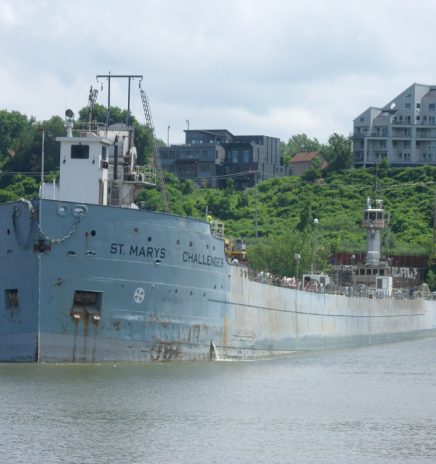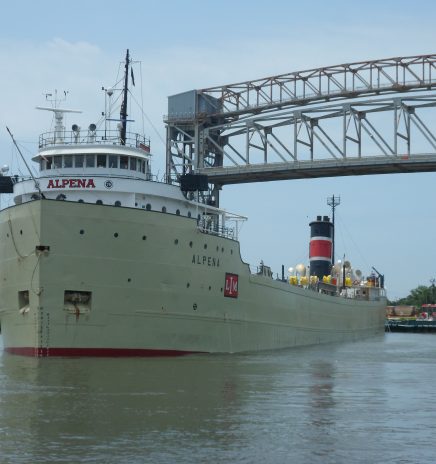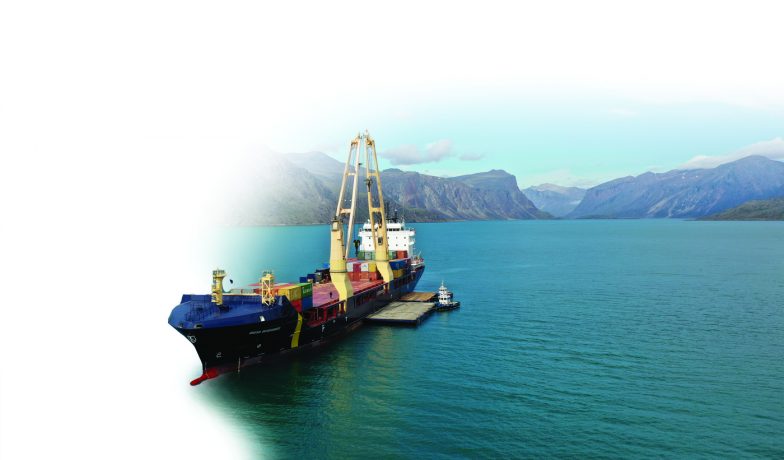Arctic Sailing
This is the Great Pacific Media introduction for “High Arctic Haulers,” a reality-television series that launched in 2020 and tracks the perilous journey of the Arctic Sealift. M/V Miena Desgagnés is one of five ships racing to resupply these Arctic communities each summer.
Sailing North
While the Great Lakes shipping season begins in late March and runs till mid-January, the Arctic shipping season is much shorter – running from June through mid-November, depending on weather and ice conditions.
During this short time, Canadian Arctic communities depend on the specially designed ships of Desgagnes Transarctic Inc., a subsidiary of Group Desgagnes Inc., to navigate the ice and harsh weather conditions to deliver goods. Desgagnes Transarctic, in collaboration with northern business partners Nunavut Sealink and Supply Inc. for the community of Nunavut and Taqramut Transports Inc. for the community of Nunavik, has been hustling supplies to the remote residents for more than 50 years.
Remote Living
The Nunavik territory comprises the northern third of the province of Quebec, covering a land area of over 171,000 square miles north of the 55th parallel. It is larger than the state of California. Nunavik is separated from neighboring Nunavut by the Hudson Bay to the west and Hudson Strait and Ungava Bay to the north.
Nunavut is comprised of a major portion of northern Canada and most of the Arctic Archipelago. It is the least populous of Canada’s provinces and territories – and is one of the world’s most remote and sparsely settled regions. The Nunavut territory has about 40,000 residents, consisting mostly of Inuit peoples living in an area of just over 725,000 square miles.
Both northern territories are rich in mineral deposits, including nickel, gold and iron ore.
Getting In and Out
The Miena Desgagnés is one of eight ships in the Desgagnes Transarctic fleet that delivers goods to help people in the northern communities stockpile everything from fuel, non-perishable food, mining equipment, vehicles, building supplies and anything else needed to get through the long winter season. These cargoes are loaded at the ports of Becancour, Valleyfield and Sainte-Catherine, Quebec.
Miena Desgagnés was built in 2017 by Jiangzhou Union Shipbuilding of Ruichang, China. She was originally given the name of Jan. She was built as a multipurpose cargo ship with tween-decks to carry general cargo, dry bulk and containers. She is specially designed to navigate through ice and carry heavy cargo.
Jan was acquired in 2018 by Transport Desgagnes and renamed Miena Desgagnés.
The Miena Desgagnés is 482-feet long, 75-feet wide and has a depth of 37 feet. The vessel has a capacity of 11,492 tons and is equipped with a pair of cranes capable of lifting 250 tons each to service two cargo holds.
After the Arctic Sealift is over, the Desgagnes Transarctic fleet is chartered out internationally under Navigation Desgagnes Inc. until they are called back for the next season.
For more details on the Sealift, see www.arcticsealift.com. To stream the docudrama High Arctic Haulers, go to www.cbc.ca/television/higharctichaulers.

Meeting the Challenge: The St. Mary’s Challenger
One ship has met the challenge of transporting bulk commodities to help build the economy of the United States for over 100 years. The bulk cement barge known today as... Read More

Alpena: Classic Laker 80 Years Young
In mid-March, the cement carrier Alpena departed her winter lay up dock in Cleveland sporting a fresh coat of paint from her five year inspection at Fincantieri Bay Shipbuilding at... Read More




